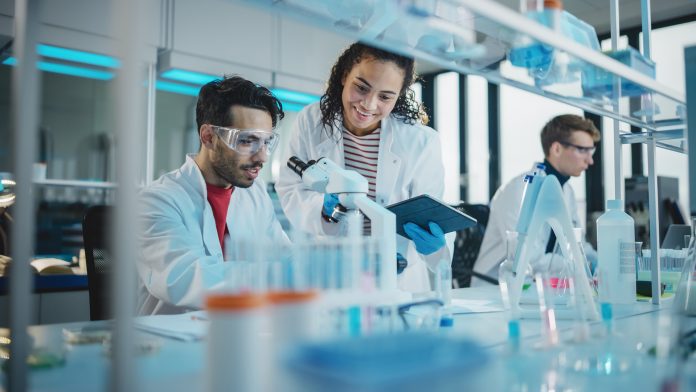
Researchers have developed an injectable cure for inherited heart muscle conditions that can kill young people.
An international team of researchers were recently announced as the winners of the British Heart Foundation’s Big Beat Challenge competition after presenting their concept of an injectable cure for inherited heart muscle conditions that can kill young people. The injectable technology could be available within years, changing the lives of young people and their families.
The winning team, CureHeart, will receive a £30m grant to develop the first cures for inherited heart muscle conditions with innovative gene therapy technologies that could edit or silence faulty genes that cause these deadly conditions. The team consisted of world-leading scientists from the UK, US and Singapore and was selected by an International Advisory Panel chaired by Professor Sir Patrick Vallance, Chief Scientific Advisor to the UK Government.
What are inherited heart muscle conditions?
Inherited heart muscle conditions can cause the heart to stop suddenly or cause progressive heart failure in young people. Statistics reveal that 12 people under 35 die of an undiagnosed heart condition in the UK every week. These deaths are often attributed to inherited heart muscle conditions.
It is estimated that one in 250 people worldwide is affected by inherited heart muscle conditions. Moreover, there is a 50:50 risk of the faulty genes being passed to their children, and in some cases, multiple family members will develop heart failure, need a heart transplant, or die from sudden cardiac death at a young age.
BHF Professor Hugh Watkins, from the Radcliffe Department of Medicine at the University of Oxford and lead investigator of CureHeart, said: “This is our once-in-a-generation opportunity to relieve families of the constant worry of sudden death, heart failure and the potential need for a heart transplant. After 30 years of research, we have discovered many genes and specific genetic faults responsible for different cardiomyopathies, and how they work. We believe that we will have a gene therapy ready to start testing in clinical trials in the next five years.
“The £30 million from the BHF’s Big Beat Challenge will give us the platform to turbo-charge our progress in finding a cure so the next generation of children diagnosed with genetic cardiomyopathies can live long, happy and productive lives.”
Gene-editing technology
The CureHeart team will use gene-editing technology of CRISPR to deploy ultra-precise techniques, called the base and prime editing, in the heart for the first time. These innovative approaches use ingenious molecules that act like tiny pencils to rewrite single mutations buried within the DNA of heart cells in people with inherited heart muscle conditions.
The focus point for this technology will be on two areas. The first area is where the faulty gene produces an abnormal protein in the pumping machinery of the heart; the team will aim to correct or silence the faulty gene by rewriting the single spelling mistakes or switching off the entire copy of the faulty gene. Then, where the faulty gene does not produce enough protein for the heart muscle to work effectively, the team will increase healthy heart muscle protein production. They will do this by utilising genetic tools to correct the function of the faulty copy of the gene or to stimulate the normal copy of the gene.
The team used animals with inherited heart muscle conditions and human cells to test their theory, and the approach was successful. They noted that the therapy could could be administered through an injection in the arm that would stop progression and potentially cure inherited heart muscle conditions. The technology may also prevent the disease from developing in family members carrying the faulty gene, but have not developed the condition.
Dr Christine Seidman at Harvard University and co-lead of CureHeart said: “Acting on our mission will be a truly global effort. We’ve brought in pioneers in new, ultra-precise gene editing, and experts with the techniques to ensure we get our genetic tools straight into the heart safely. It’s because of our world-leading team from three different continents that our initial dream should become reality.”









